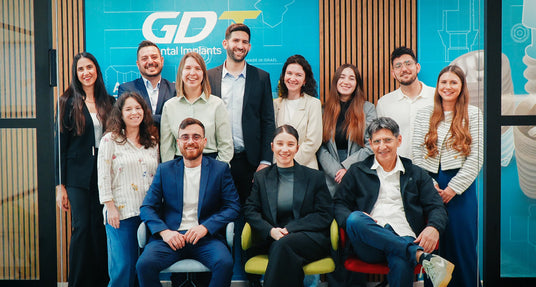Every dental procedure relies on precision. From the first cut of tooth structure to the final high-gloss finish, rotary instruments are at the core of restorative dentistry. Yet many clinicians underestimate how much the choice and sequence of burs, discs, and polishers affect outcomes.
A structured workflow not only improves accuracy and efficiency but also ensures restorations last longer and patients leave with optimal comfort. This guide takes you step by step through a complete rotary instrument workflow from preparation to polishing.
Step 1: Tooth and Cavity Preparation
The foundation of every restoration starts with preparation. Selecting the right bur determines accuracy, efficiency, and conservation of tooth structure.
- Diamond burs: Ideal for precise cutting of enamel and dentin, with grit sizes chosen depending on the procedure.
- Carbide burs: Effective for cavity refinement, smooth cutting, and reduced vibration.
-
Surgical burs: Essential for bone shaping and implant-related procedures.
Using high-quality burs minimizes heat, avoids unnecessary microfractures, and ensures clean margins. For example, GlobalBurs diamond burs are engineered with advanced coatings to extend durability while maintaining sharpness.
Step 2: Shaping and Refinement
Once the basic preparation is complete, refinement shapes the cavity or crown margin to achieve ideal contours.
- Fine-grit diamond burs provide smoother surfaces with minimal chipping.
- Carbide finishing burs are excellent for refining cavity walls and margins.
-
Diamond strips allow precise interproximal contouring, critical for esthetics and function.
This stage is about control, removing the least amount of healthy tooth possible while preparing the foundation for restoration.
Step 3: Cutting and Prosthetic Adjustments
Beyond tooth structure, rotary instruments are used to cut, contour, or adjust prosthetic materials like zirconia, ceramics, and composites.
- Crown cutters quickly section crowns or bridges with minimal force.
-
Endo burs allow efficient access and shaping during root canal therapy.
-
CAD/CAM milling burs shape restorations digitally, providing accuracy in complex designs.
Efficiency here matters, sharper, more durable burs reduce chair time and limit stress on both the patient and the dentist.
Step 4: Polishing and Finishing
Polishing is often underestimated, yet it is essential for:
- Patient comfort (smoother surfaces reduce irritation).
- Aesthetics (high-gloss finish for composites, ceramics, or zirconia).
-
Function (less plaque accumulation, lower wear on opposing dentition).
- Polishers designed for specific materials composite, porcelain, zirconia are necessary to achieve the right finish.
-
Multi-step polishing systems can progress from coarse to ultra-fine, ensuring surfaces are both smooth and shiny.
At GlobalBurs, polishing tools are tailored to different restorative materials, making the process efficient and predictable.
Step 5: Final Checks and Workflow Efficiency
A well-planned rotary workflow saves time, reduces wear on instruments, and minimizes unnecessary adjustments. Consider:
- Kits & Accessories that provide a full range of burs for specific procedures.
- Organized rotation between coarse, fine, and polishing instruments.
-
Proper sterilization and packaging to ensure infection control.
For example, GlobalBurs rotary instrument kits provide clinicians with ready-to-use sets that cover preparation through polishing in a single organized workflow.
Why Workflow Matters
When burs are used in a systematic sequence, outcomes are consistent and predictable. Benefits include:
- Reduced risk of restoration failure.
- Shorter chair time.
- Enhanced patient comfort.
-
Lower costs from extended instrument life and fewer complications.
Rotary instruments may seem like small tools, but in practice, they are central to every restorative and surgical procedure.
FAQs
1. Can I use the same bur for multiple procedures?
While possible, it’s not ideal. Each bur is designed for a specific purpose. Using the wrong one can shorten lifespan and compromise accuracy.
2. How often should rotary instruments be replaced?
Replace burs when cutting efficiency decreases, surfaces appear worn, or post-sterilization dulling occurs. Premium burs last longer, but all instruments have a natural lifespan.
3. Do polishing steps really affect restoration longevity?
Yes. Smooth surfaces resist plaque buildup and wear, extending both the restoration’s life and patient comfort.
4. Are rotary kits better than buying instruments individually?
Kits provide convenience and consistency, ensuring the right sequence of instruments is always available. They’re especially useful for new associates or busy practices.
Final Takeaway
A complete rotary workflow, from preparation to polishing, is the backbone of modern restorative dentistry. By choosing instruments designed for precision, durability, and efficiency, dentists can deliver better outcomes with less effort.
With innovations in diamond exposure, advanced coatings, and cleanroom packaging, GlobalBurs makes it easier for clinicians to follow a structured workflow that ensures both patient satisfaction and professional confidence.
References
-
Anusavice, K. J., Shen, C., & Rawls, H. R. (2012). Phillips' Science of Dental Materials. 12th Edition. Elsevier.
https://shop.elsevier.com/books/phillips-science-of-dental-materials/anusavice/978-1-4377-2418-9 -
Ferraris, F., Conti, A., & Vigolo, P. (2019). Restorative strategies in modern dentistry: a review of preparation and finishing techniques. Journal of Prosthodontic Research, 63(3), 261–268. https://www.researchgate.net/publication/385971234_Advancements_in_Restorative_Dentistry_A_Systematic_Review_of_Techniques_and_Materials
-
Daou, E. E. (2014). The zirconia ceramic: strengths and weaknesses. Open Dentistry Journal, 8, 33–42. https://pmc.ncbi.nlm.nih.gov/articles/PMC4026739/


